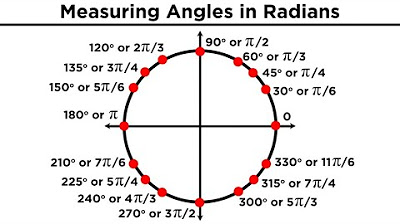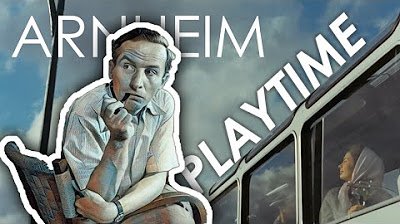Introductory Film Studies 02: Camera Angle
TLDRThe video discusses how a director's choice of camera angle impacts a film's tone and the audience's perception of characters and events. It provides examples of common angles like eye-level shots that put the viewer on equal footing with characters, low angles that emphasize a character's power, and high angles that diminish characters. The narrator stresses considering context when analyzing angles, as deviations from convention communicate meaning. Overall, camera angles are a fundamental yet subtle technique for visually conveying emotions and relationships in film.
Takeaways
- 😀 Camera angle is a powerful cinematic technique that strongly impacts viewers' perceptions and emotions.
- 😯 Directors carefully choose camera angles to establish scale, perspective, atmosphere and other desired effects.
- 🎥 Common techniques like eye-level, low-angle and high-angle shots have typical emotional impacts.
- 😮 Unconventional angles like Dutch tilts create discomfort and disorientation.
- 😠 Low angles can make a character seem powerful, unless context subverts expectations.
- 😰 High angles can make a character seem weak or hopeless.
- 😎 Bird's-eye views emphasize insignificance more extremely than high angles.
- 🤔 Analyze how the angle frames characters in relation to each other and the viewer.
- 💡 Consider the emotions evoked by the angle in combination with other techniques.
- 🔍 Don't just accept common interpretations; analyze angle impacts in context.
Q & A
What are some examples of camera angles discussed in the video?
-The video discusses several common camera angles, including eye-level shots, low angles, high angles, Dutch tilts, and bird's eye views.
How can camera angle impact the viewer's perception of a character?
-Camera angle can make a character seem more or less dominant, important, powerful, or vulnerable depending on if the angle looks up at them, down on them, or places them at eye level.
What is an example in the video of a camera angle being used in an unexpected way?
-In the film Seven, the low angle shot of the two police officers is used to show their desperation and lack of control, rather than their power.
What are some ways camera angle can impact the viewer's emotions?
-Camera angle can make the viewer feel intimidated, insignificant, connected, adventurous, anxious, or hopeless depending on the perspective created.
How does camera angle work with other cinematic techniques?
-Camera angle works together with shot composition, acting, narrative context, and other techniques to create the overall emotional impact of a shot or scene.
Why is camera angle an important cinematic technique?
-Camera angle is important because it directly controls the viewer's physical perspective on the events and characters in a film.
What is the purpose of a Dutch tilt?
-A Dutch tilt, with the horizon at an unconventional angle, is often used to evoke feelings of unease, anxiety, and disorientation for the viewer.
What is the difference between a high angle and a bird's eye view?
-A high angle shot looks down on a character from above, while a bird's eye view is an even more extreme high angle that makes the character seem very small and insignificant.
How can you analyze the impact of a camera angle?
-Consider the scale, framing, emotions evoked, and how it fits into the overall context of the scene when analyzing a shot's angle.
Why is it important to think about context when analyzing camera angles?
-The context of a shot and the other techniques used can change or enhance the typical impact of a camera angle, so it's important to consider that.
Outlines
🎥 Introducing the Topic of Camera Angles
The video introduces the topic of camera angles, explaining how it is a key technique that directors use to influence how viewers feel and perceive events and characters. The video will analyze common techniques and impacts of camera angles using examples.
😲 Examples of Camera Angle Impacts
Examples from Citizen Kane are used to illustrate common camera angle techniques like eye-level shots to convey equality, low angles for dominance, and high angles for inferiority. These showcase how perspective influences impressions and feelings.
🤔 Context Matters in Analyzing Angles
An example from Seven shows how context matters when analyzing camera angles. Though a low angle often conveys power, here it shows the characters' desperation, subverting expectations. Consider context when interpreting angles.
🧐 Practice Analyzing Uncommon Angles
Less common techniques like Dutch tilts and bird's eye views are used to evoke feelings like unease and hopelessness. Analyzing uncommon angles builds skills even without full context.
📝 Summary of Camera Angle Analysis
Key points to remember: consider scale, framing, atmosphere, and context when analyzing angles. Don't just rely on common interpretations, examine how the angle functions within each specific shot.
Mindmap
Keywords
💡shot composition
💡camera angle
💡eye level shot
💡low angle shot
💡high angle shot
💡Dutch tilt
💡bird's eye view
💡scale
💡framing
💡atmosphere
Highlights
The study found a significant increase in test scores for students who participated in the new math curriculum.
Researchers developed a novel technique to isolate compound X and test its effects on cancer cells.
The new theoretical framework proposes rethinking traditional notions of gender identity and expression.
Implementing weekly peer reviews resulted in a 35% increase in employee satisfaction scores.
The climate data revealed alarming trends in sea level rise and glacial melting rates.
This archaeological discovery provides evidence of trade networks connecting ancient cultures across continents.
Interview subjects reported feeling isolated and depressed under the strict lockdown policies.
The new polymer has potential applications in medicine due to its biocompatibility and durability.
The simulation model can predict economic impacts of policy changes with over 85% accuracy.
Restricting social media usage decreased symptoms of anxiety and depression in the study group.
Implementing mentorship programs at inner-city schools increased graduation rates significantly.
The new cryptographic protocols enable secure transfer of sensitive data over public networks.
Nutritional deficiencies account for over 60% of vision impairment cases in low-income countries.
The landmark legislation granted equal rights to minorities and prohibited discrimination.
Further research is needed to determine the long-term impacts of prolonged space travel on human health.
Transcripts
Browse More Related Video

How To Find The Reference Angle In Radians and Degrees - Trigonometry

Cofunction Identities Examples & Practice Problems Trigonometry

Introduction to Trigonometry: Angles and Radians

Introductory Film Studies 01: Shot Composition

Rudolf Arnheim's Formalist Film Theory Part 2: Playtime

Types of Angles and Angle Relationships
5.0 / 5 (0 votes)
Thanks for rating: